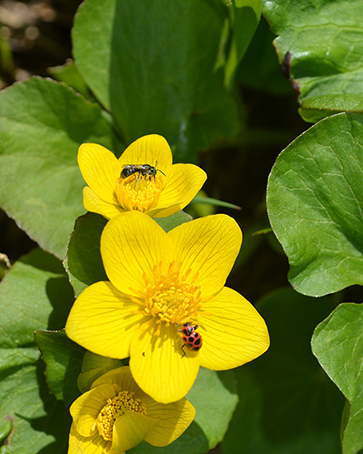Marsh Marigold
 Caltha palustris
Caltha palustris
Introduction
Caltha palustris (Marsh Marigold) matures to 2′ in height and has large, yellow flowers noticeably blooming early spring in the wetlands. Attractive glossy, heart-shaped leaves add to its appeal. This foliage is acidic so mammalian herbivores generally avoid it. It grows in all light conditions, from full sun to full shade. Marsh Marigold, a member of the Buttercup (Ranunculus) family, can be planted along stream banks or near water gardens in small clumps or large patches. It can tolerate standing water in the spring during its bloom season.
Don’t confuse the native Marsh Marigold for the non-native invasive Lesser Celandine (Ranunculus ficaria), a wetland invader mostly found in the Eastern US, but recently making its way to the Midwest. A good way to tell these two apart is the flower petals: Marsh Marigold has 5-9 petals, while Lesser Celandine has 8 or more petals.
Life Cycle
Perennial
Sun Exposure
Full, Partial, Shade
Soil Moisture
Wet, Medium-Wet
Height
2 Feet
Bloom Time
April, May, June
Bloom Color
Yellow